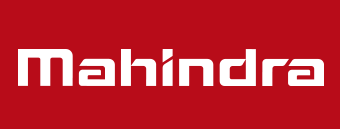This post contains external links. Please review our external linking policy.
Guest blog post by Steve Johnson, CEO, Missouri Partnership
 Businesses with overseas locations are rapidly transitioning production back to the United States, and facilities are popping up in every region, including Missouri. Manufacturers are taking advantage of what Missouri has to offer by joining an existing industry center with the infrastructure and talent supplies already in place, including access to major customers.
Businesses with overseas locations are rapidly transitioning production back to the United States, and facilities are popping up in every region, including Missouri. Manufacturers are taking advantage of what Missouri has to offer by joining an existing industry center with the infrastructure and talent supplies already in place, including access to major customers.
The United States is poised to re-emerge as a manufacturing superpower, thanks in large part to foreign direct investment. Since January 2017, Missouri has attracted significant investments by foreign-owned companies and from U.S. companies’ reshoring jobs. Some examples include:
- Brødrene Hartmann, a Danish manufacturing company, kicked off production at its U.S. headquarters in Rolla, Missouri;
- Trans-Lux reshored jobs from China to Missouri;
- Toyota invested more than $17 million in its Missouri plant; and,
- Nammo AS, an international aerospace and defense company headquartered in Norway, chose Pettis County, Missouri, as the site of its latest U.S. distribution center.
SelectUSA EDO SPOTLIGHT SERIES:
This post is part of SelectUSA’s EDO Spotlight series, highlighting the work of EDOs around the country recruiting foreign direct investment, how that work supports jobs and economic growth across the United States, and how SelectUSA partners with EDOs to support economic development.
“This move to Missouri is a well thought through strategy where all the benefits for all counterparts are optimized,” said Raimo Helasmaki, Nammo’s Executive Vice President of Commercial Ammunition. “The local authorities have been very easy to work with to help develop this project. We look forward to years of growth through this facility.”
In February, Faurecia, a leading automotive technology company headquartered in France, announced an investment of more than $60 million and the creation of more than 300 jobs in Blue Springs, Missouri.
“Kansas City Metro and the Blue Springs areas are known for being a source of excellence in American manufacturing, and we’re looking forward to building on that expertise and skill set as we continue to provide the very best to our customers,” said Donald Hampton, Jr., president of Faurecia Interiors in North America.
In March, Switzerland’s ARG International AG announced an investment in the U.S.-based Magnitude 7 Metals, creating more than 450 advanced manufacturing jobs in Marston, Missouri.
“From Washington to Missouri, what we are announcing today is the result of years of hard work and a major change in the way employers and farmers are treated,” said U.S. Representative Jason Smith (MO-8) about the Magnitude 7 investment. “We are bringing back the domestic aluminum and steel industries, and with it, jobs.”
Manufacturing buzz is building and it has crossed international barriers. Foreign companies recognize the advantages of manufacturing in the United States, and their interest is leading to serious discussions and decisions. This migration seems to be leading to a resurgence in American manufacturing prosperity, returning to its roots as a center of innovation and enterprise.
For more information on the Missouri Partnership, please visit missouripartnership.com.




 We are fast approaching an important gathering of business and government leaders in Washington, D.C., at the
We are fast approaching an important gathering of business and government leaders in Washington, D.C., at the 
 I grew up in Detroit during a period when car culture was the dominant force driving this area. I recall the many warm summer afternoons spent “helping” my uncle and his friends wrench on their muscle cars, hoping that I would have my own hotrod to tinker with someday. But one way or the other, I’d caught the bug, and at the ripe old age of 12 decided that the auto industry was my future.
I grew up in Detroit during a period when car culture was the dominant force driving this area. I recall the many warm summer afternoons spent “helping” my uncle and his friends wrench on their muscle cars, hoping that I would have my own hotrod to tinker with someday. But one way or the other, I’d caught the bug, and at the ripe old age of 12 decided that the auto industry was my future.
 As chair of the Federal Interagency Investment Working Group (IIWG),
As chair of the Federal Interagency Investment Working Group (IIWG), 